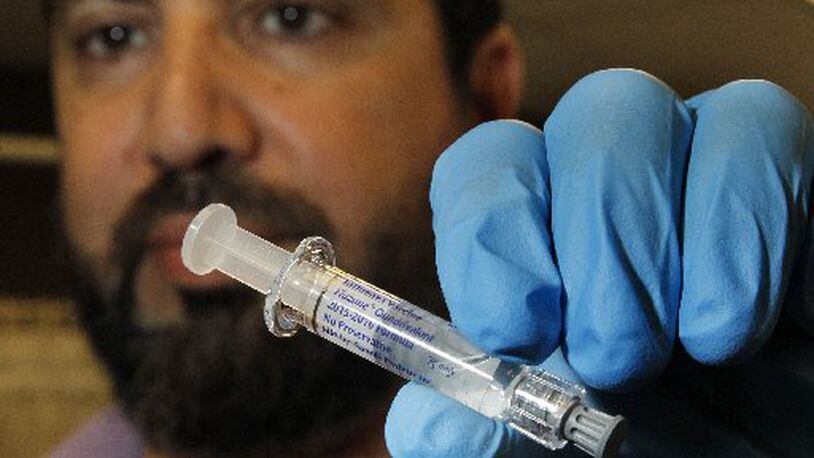So far this season, there have been 654 flu-related hospitalizations since ODH began tracking cases in October — nearly three times the number of cases reported for the same period in Ohio last season. In addition, emergency room doctors across the state are reporting large numbers of patients coming in with flu-like symptoms.
Still, the rise in flu cases and hospitalizations for flu symptoms — which can include chills, fever, cough and body aces — are typical at this time of year and far from reaching epidemic levels, local health officials said.
“Right after the holidays is when we typically see an increase, and that’s the case again this year,” said Dave Lamb, a spokesman for Springfield Regional Medical Center.
There have been 68 flu-related hospitalizations so far this season in Montgomery County, but those numbers are not alarming, according to Dan Suffoletto, a spokesman for Public Health - Dayton & Montgomery County: “The numbers here in Montgomery County are right around average for the last five-year period.”
However, there is no doubt flu activity is increasing.
In Greene County, there were four reported hospitalizations this week alone, compared to six hospitalizations reported for all of December, said Dr. Don Brannen, an epidemiologist with the health department.
“That’s a big jump,” Brannen said. “The number of cases has increased in frequency from December.”
The U.S. Centers for Disease Control and Prevention (CDC) said flu activity was widespread in Puerto Rico and 21 states by the end of last week, up from 12 states in the previous week, and the CDC predicts flu activity will to continue to rise across the country for at least the next couple of months, generally the peak of the flu season.
The 2015-16 flu season in Ohio didn’t peak until early March and ended in May with a total of 3,691 flu-associated hospitalizations, according to ODH.
Health officials said the flu vaccine is still the safest and most effective way to prevent the flu, and advise they anyone older than 6 months to get the vaccine.
ODH said it has shipped more than 396,000 doses of the flu vaccine to local health departments and other health care providers in the state, and that doesn’t include vaccines available at local pharmacies.
“There are no flu vaccine shortages across Ohio,” said Sietske de Fijter, chief of the Bureau of Infectious Diseases for ODH. “The short time it will take to get a flu vaccine is much less than the time it will take you to recover from the flu.”
In addition to the vaccine, the CDC recommends one of two prescription antiviral drugs as a second line of defense for patients with confirmed or suspected flu virus, who are hospitalized, have severe illness, or may be at higher risk for flu complications.
Patients who could benefit from the antivirals include children younger than 2; adults 65 and older; people with chronic medical conditions including asthma, heart disease, or weakened immune systems; pregnant women; American Indians/Alaska Natives; and people who are morbidly obese, according to the CDC.
“These antiviral medications can reduce the severity of the flu, and prevent serious flu complications,” de Fijter said. “They work best when started within two days of getting sick.”
